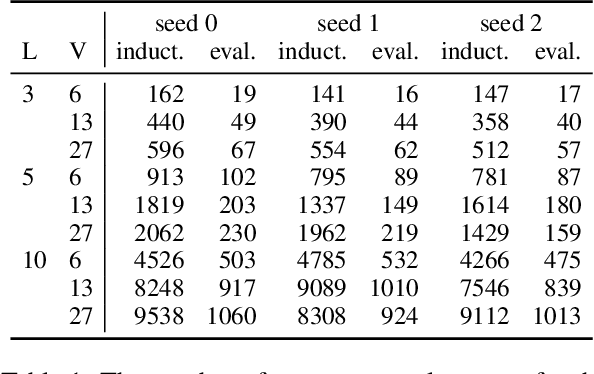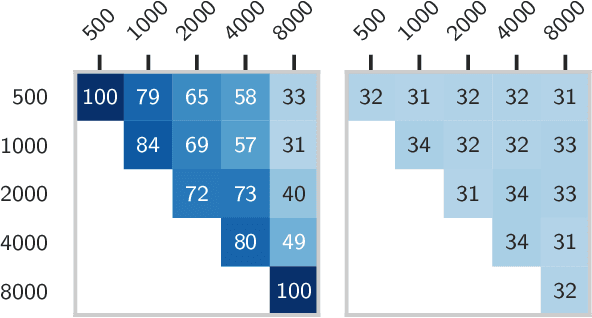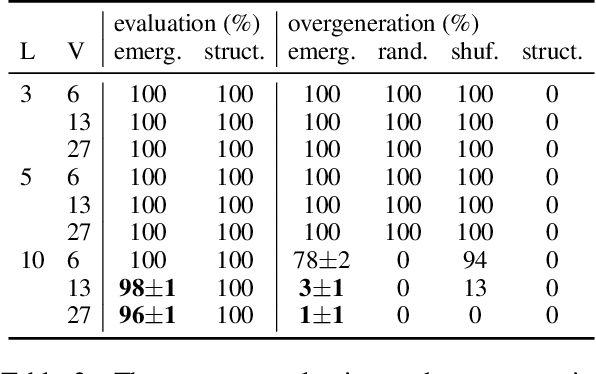Silvan de Boer
The Grammar of Emergent Languages
Oct 09, 2020



Abstract:In this paper, we consider the syntactic properties of languages emerged in referential games, using unsupervised grammar induction (UGI) techniques originally designed to analyse natural language. We show that the considered UGI techniques are appropriate to analyse emergent languages and we then study if the languages that emerge in a typical referential game setup exhibit syntactic structure, and to what extent this depends on the maximum message length and number of symbols that the agents are allowed to use. Our experiments demonstrate that a certain message length and vocabulary size are required for structure to emerge, but they also illustrate that more sophisticated game scenarios are required to obtain syntactic properties more akin to those observed in human language. We argue that UGI techniques should be part of the standard toolkit for analysing emergent languages and release a comprehensive library to facilitate such analysis for future researchers.
 Add to Chrome
Add to Chrome Add to Firefox
Add to Firefox Add to Edge
Add to Edge